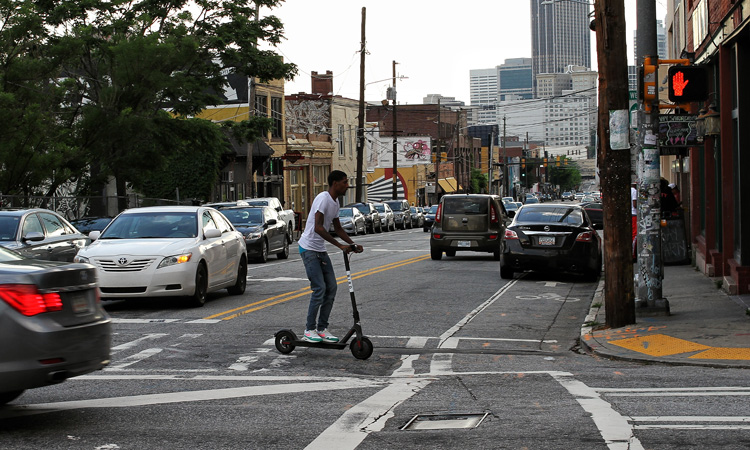Safely influencing rider behaviour
- Like
- Digg
- Del
- Tumblr
- VKontakte
- Buffer
- Love This
- Odnoklassniki
- Meneame
- Blogger
- Amazon
- Yahoo Mail
- Gmail
- AOL
- Newsvine
- HackerNews
- Evernote
- MySpace
- Mail.ru
- Viadeo
- Line
- Comments
- Yummly
- SMS
- Viber
- Telegram
- Subscribe
- Skype
- Facebook Messenger
- Kakao
- LiveJournal
- Yammer
- Edgar
- Fintel
- Mix
- Instapaper
- Copy Link
Posted: 10 June 2020 | Sam Mehmet (Intelligent Transport) | No comments yet
Bird’s Director of Safety Policy & Advocacy, Paul Steely White, tells Intelligent Transport’s Sam Mehmet how the micromobility service operator is advocating to influence rider behaviour as a way to replace as many car trips as possible, as safely as possible.


How should micromobility operators develop their safety initiatives, and what is your role within this at Bird?
I have worked in New York City for the past 25 years on sustainable transportation, running Transportation Alternatives for almost 15 years – a sort of cross between London Cycling Campaign and Sustrans. One of my primary goals at Transportation Alternatives was, of course, to improve traffic safety for road users, pedestrians and cyclists. Most of that involved work to reduce the vehicular speed limit in New York City – which we did, to 25.
We worked with Rod King on this – a UK-based campaigner who has been at the forefront of lowering city-wide speed limits all over the UK. He really helped us make the case. I was recruited by Bird in 2018 because of my safety expertise and experience, and it was gratifying to see a company that was already putting safety first but also wanted to really elevate safety to an even higher priority.
For us to do our job properly, we need to be clearly communicating, encouraging and enforcing a lawful standard of conduct
A lot of the work I have been involved with at Bird has been collaborations with the broader safety community, recognising that, as good as we are, we can’t do it alone. We’ve been engaging with a lot of the leaders in the field; safety researchers, both epidemiologists and medical professionals, a lot of regulators and city agencies, and local safety advocates.
It’s important to look at the major studies taking place about micromobility so that we can try and answer the important questions, like what are the causes of the crashes we’re seeing? What’s the rate of the crashes? Are we seeing disproportionate rates of injury with micromobility versus cycling, for example? What are the kinds of injuries we’re seeing? What are the probable factors? More importantly, once we understand what the research is uncovering, what are the implications for that research? How can we use those findings to inform preventative measures, whether they be vehicle design, vehicle maintenance, rider education, infrastructure or otherwise?
Related topics
Fleet Management & Maintenance, Mobility Services, Passenger Experience, Sustainable Urban Transport, Vehicle & Passenger Safety
Issue
Issue 2 2020
Related modes
e-scooters
Related organisations
Bird
Related people
Rebecca Hahn







